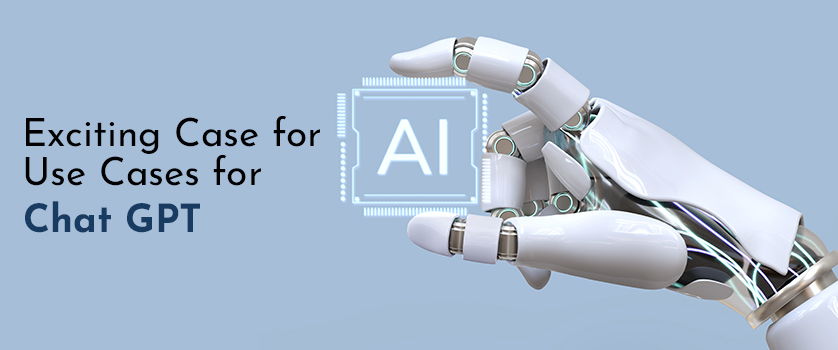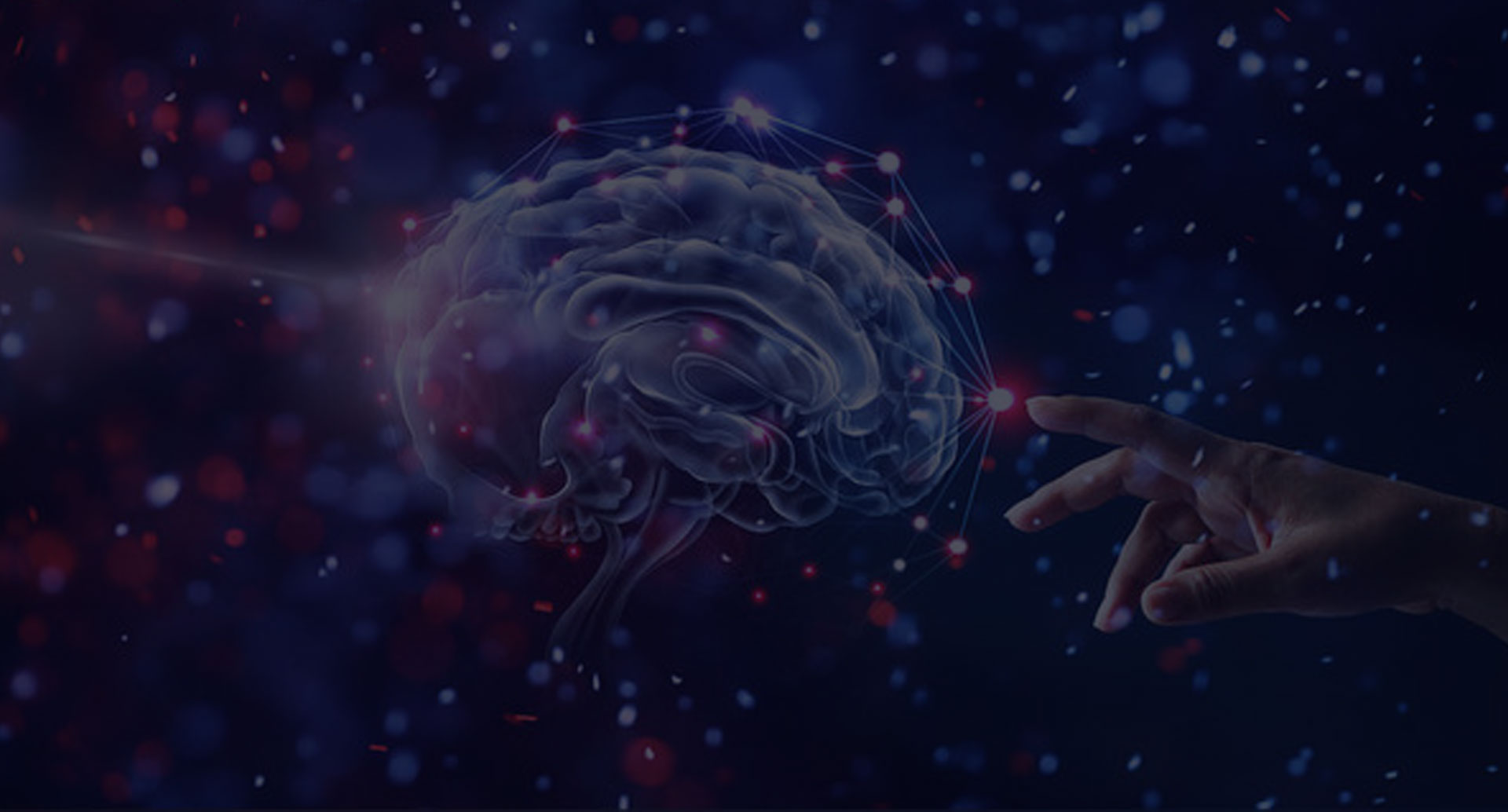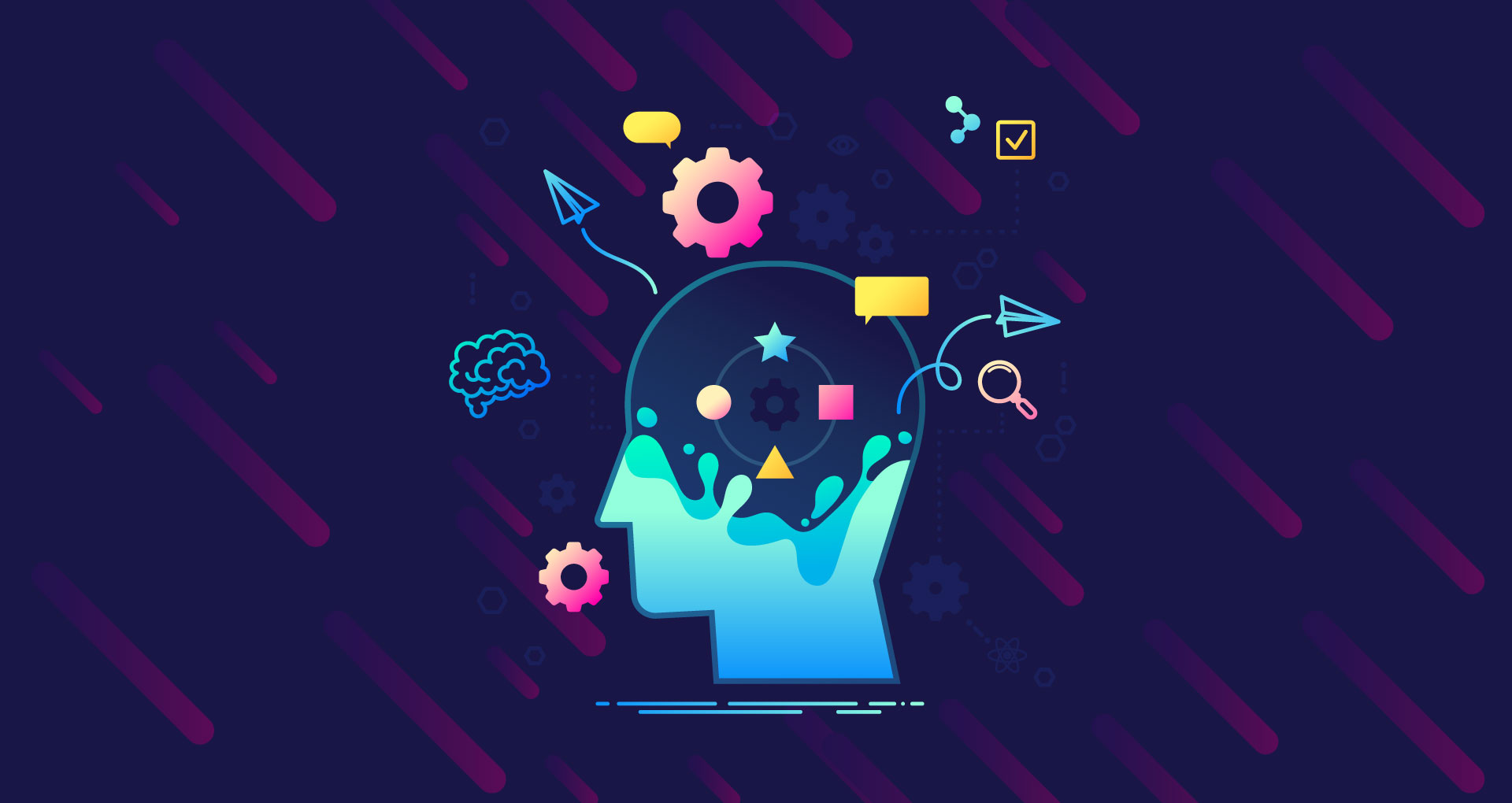
Anshul Jain
December 29, 2023
Chat GPT, a groundbreaking AI tool, has rapidly become a game-changer in the software development industry. For software techies, Chat GPT isn't just another tool; it's a revolutionary ally. Whether you're coding, debugging, or managing complex software projects, Chat GPT offers an unprecedented level of support and efficiency. Its ability to automate tedious tasks, suggest code improvements, and provide instant solutions to complex problems has made it an indispensable asset.
This blog aims to delve into ten exciting use cases of Chat GPT specifically tailored for software techies. Whether you are a seasoned developer or just starting in software development, these insights will open your eyes to the remarkable capabilities of Chat GPT and how it can elevate your work to new heights.
-
Code Optimization
Code optimization is a critical phase in software development, where efficiency, readability, and code quality are enhanced. This is where Chat GPT comes into play, offering a powerful tool for developers in this process.
How Chat GPT Enhances Code Optimization
- Analyzing Code for Improvements: Chat GPT sift through vast lines of code and identify specific areas that need refinement. This might include simplifying complex code segments, suggesting more efficient algorithms, or even spotting redundant code that could be removed.
- Time and Resource Saving: The traditional approach to code optimization often involves manual review and testing, which can be time-consuming. Chat GPT streamlines this process significantly. Quickly analyzing and identifying potential improvements reduces the time developers spend on code review and testing.
- Enhancing Code Quality: By leveraging its vast database and learning capabilities, Chat GPT can offer innovative solutions that enhance the quality and performance of the code.This could suggest a more efficient data structure or a cleaner way to execute a particular function.
- Continuous Learning: Chat GPT continually learns from the new code patterns and solutions it encounters.It optimizes code to improve it over time, making it an increasingly valuable tool in the software development toolkit.
-
Bug Fixing
In the fast-paced world of software development, identifying and fixing bugs is a crucial, yet often time-consuming, task. This is where Chat GPT, leveraging its advanced AI algorithms, revolutionizes the bug-fixing process.
How Chat GPT Transforms Bug Identification
Chat GPT accelerates bug identification by quickly analyzing code to pinpoint errors. Unlike traditional methods that rely heavily on manual effort, Chat GPT employs machine learning and natural language processing to sift through code. This ability to scan and interpret code at an astonishing speed means that software developers can identify potential issues much faster than before.
- Proactive Issue Resolution: Chat GPT's AI algorithms are adept at proactively addressing potential issues before they even manifest. By foreseeing possible future bugs and vulnerabilities, Chat GPT allows developers to make corrections preemptively, thus avoiding costly and time-consuming fixes down the line.
- Integration and Ease of Use: Integrating Chat GPT into the software development workflow is straightforward and seamlessly fits within existing development ecosystems. This integration ensures that developers don't need to switch between multiple tools, allowing them to focus on their primary tasks without interruption.
-
Code Generation
Chat GPT, with its advanced machine learning and natural language processing capabilities, is a powerful ally for developers, providing them with templates and sample implementations. This feature is incredibly beneficial, especially when time is of the essence or when developers are dealing with complex coding scenarios.
How Chat GPT Facilitates Swift and Accurate Code Generation
Chat GPT's approach to code generation is both innovative and practical. Developers can describe their requirements in natural language, and Chat GPT translates these descriptions into functional code snippets. This ability not only speeds up the development process but also helps in maintaining a high standard of code quality.
For instance, a developer might need a specific function in Python to handle a data processing task. Instead of spending hours writing and testing this function, the developer can describe the desired functionality to Chat GPT. The AI then generates a code snippet that fits these requirements, significantly reducing development time.
Real-World Applications and Benefits
The real-world applications of this feature are vast. Whether it's generating backend logic for a web application, scripting for automation tasks, or even complex algorithmic functions, Chat GPT's code generation capability is a game-changer. It's particularly beneficial for:
- Rapid Prototyping: Developers can quickly create prototypes, allowing for faster iteration and feedback cycles.
- Learning and Experimentation: New developers or those learning a new programming language can use Chat GPT to understand coding patterns and best practices.
- Reducing Boilerplate Code: Frequently used code structures can be generated instantly, allowing developers to focus on more complex aspects of their projects.
-
Testing
Chat GPT emerges as a powerful ally in the domain of testing. Here's how it transforms the testing process:
- Enhancing Test Creation: The traditional approach to generating test cases often involves a manual, time-consuming process that can overlook potential edge cases. Chat GPT revolutionizes this by automating the generation of test scenarios. Chat GPT can produce a range of test cases that ensure comprehensive coverage by feeding the model with software requirements or user stories.
- Debugging Made Easier: Chat GPT also serves as an invaluable debugging tool. The integration of AI in this process allows for the early identification of potential issues, long before they escalate into more significant problems. This early detection is crucial in the software development life cycle, as it reduces the time and resources spent on troubleshooting and rectifying bugs.
- Streamlining the Testing Workflow: Once your software requirements or user stories are inputted into the GPT model, a suite of test cases is generated. Regular updates to the model with new requirements or user feedback can generate fresh test cases, keeping your testing process agile and up-to-date with the latest software changes.
-
Documentation
Traditionally, creating and maintaining documentation has been time-consuming, often seen as a necessary yet cumbersome part of the process. However, with the advent of Chat GPT, this aspect of development has undergone a significant transformation.
How Chat GPT Transforms Documentation
Chat GPT, with its advanced capabilities, automates the creation of documentation. This AI-driven process involves the model scanning the codebase, identifying key components like functions, classes, and methods, and generating human-readable descriptions for each.
Benefits of Automated Documentation
- Time Efficiency: The most immediate benefit is the reduced time spent on manual documentation. Developers can now focus more on coding and less on documenting, as Chat GPT handles most of this work.
- Consistency and Accuracy: Automated documentation ensures consistency across the documentation. As the code evolves, so does the documentation, keeping everything in sync and up to date.
- Ease of Maintenance: With the documentation closely following the codebase changes, maintaining it becomes much more straightforward. Any updates in the code are automatically reflected in the documentation, eliminating discrepancies.
- Enhanced Collaboration: Comprehensive and up-to-date documentation fosters better collaboration among team members, especially when onboarding new developers or when teams are working remotely.
-
Project Management
Project management in software development is a complex task. It involves coordinating numerous activities, from scheduling meetings to tracking resources. This is where Chat GPT comes into play, offering a game-changing solution to streamline these processes.
- Automate Meetings: Project managers often spend considerable time scheduling meetings. Chat GPT can handle this effortlessly. By integrating with calendar applications, it can schedule appointments based on the availability of team members, send reminders, and even reschedule if conflicts arise.
- Resource Tracking: This is another critical aspect of project management. Chat GPT can monitor the utilization of resources, alerting managers when there are discrepancies or potential bottlenecks. This proactive approach ensures that resources are optimally allocated, enhancing the efficiency of the development process.
- Centralized Communication Platform: Team members can inquire about project details, deadlines, or specific tasks, and receive instant responses. This reduces the time spent on back-and-forth emails and meetings, allowing developers to focus more on their core tasks.
- Integrated Project Management Tools: Chat GPT can integrate with various project management tools, providing a unified view of the project. It can update task statuses, log time entries, and even generate progress reports. This level of integration ensures that all team members are on the same page, reducing misunderstandings and improving collaboration.
-
Version Control
Chat GPT transforms how teams handle version control. This section delves into how Chat GPT aids in streamlining version control processes, a key element in any software project.
- Efficient Management and Sharing of Code: One of the primary challenges in software development is maintaining a coherent and conflict-free codebase, especially when multiple developers are working on the same project. Chat GPT's capabilities in version control simplify this complex task. Integrating AI-driven tools provides an intuitive platform for teams to store, manage, and share code seamlessly across various stages of development.
- Progress Tracking and Conflict Resolution: Another pivotal aspect of version control is keeping track of individual contributions and identifying potential conflicts in code. Chat GPT's advanced version control features shine here, offering teams a transparent view of each member's progress. This visibility is key in early detection and resolution of merge conflicts, preventing the codebase from becoming entangled and unmanageable.
- Rollback and Automated Builds: Mistakes are inevitable in coding. Chat GPT's version control system includes rollback features, allowing teams to quickly revert to previous versions if an error or a bug is detected. This safety net ensures teams can experiment and innovate without fearing irrevocably altering the codebase. Furthermore, Chat GPT enhances efficiency by automating builds, tests, and deployments. This automation reduces manual intervention, allowing developers to focus on more critical aspects of the project.
- Seamless Integration with Development Tools: The real power of Chat GPT in version control lies in its ability to integrate with other essential development tools like bug tracking and project management systems. This integration creates a cohesive environment where all aspects of software development, from coding to deployment, are interconnected and efficiently managed.
-
Code Review
Code review stands as a critical checkpoint, ensuring that code is functional and adheres to quality standards. Chat GPT, with its advanced capabilities, is revolutionizing how we approach code reviews.
- Identifying Errors and Suggesting Improvements: One of the most significant challenges in code review is identifying potential errors and areas for improvement. Chat GPT leverage its machine learning and natural language processing capabilities to scan large volumes of code quickly and efficiently. This tool uncovers subtle issues that might go unnoticed during manual reviews.
- For instance, Chat GPT can detect inconsistencies in coding standards, potential security vulnerabilities like SQL injections or cross-site scripting, and even logic errors. Its ability to analyze code holistically means it can suggest improvements for individual lines of code and the overall structure and approach.
- Enhancing Software Quality and Security: By integrating Chat GPT into the code review process, developers can significantly enhance the quality and security of their software. The tool’s detailed analysis helps ensure that code adheres to best practices and is robust against potential vulnerabilities. Moreover, Chat GPT’s suggestions often include best practices and innovative solutions, which can be a learning opportunity for developers. This aspect of continuous learning and improvement is invaluable in the fast-evolving tech landscape.
- Streamlining the Review Process: Apart from enhancing the quality of the code, Chat GPT also streamlines the review process. Its scanning and analyzing code efficiency means faster review cycles, allowing teams to move quicker from development to deployment. This efficiency is especially beneficial in agile development environments, where speed and iterative improvements are essential.
-
Continuous Integration
Chat GPT redefines the traditional development workflow with its advanced capabilities.
Real-Time Code Analysis
As developers push their code changes, Chat GPT scrutinizes the code in real-time, identifying any bugs or inconsistencies. This immediate feedback loop is crucial in preventing the integration of problematic code into the main repository, thereby maintaining the integrity and reliability of the software.
- Automating Routine Tasks: Chat GPT automates crucial yet repetitive tasks such as running tests, building images, and deploying code to production servers. This automation saves valuable time and minimizes human error, leading to a more efficient and reliable development process.
- Enhanced Testing and Building Processes: Chat GPT enhances integration, testing and building processes automatically generating and executing test cases based on the latest code changes. This ensures that every new piece of code is thoroughly vetted before integration. Furthermore, Chat GPT aids in the building process by ensuring that the code is always in a state ready for deployment, thus facilitating a smoother transition from development to production.
- Aiding in Faster, More Efficient Releases: With Chat GPT, the overall cycle of development, testing, and deployment accelerates. This acceleration is crucial for businesses striving to stay competitive and responsive to market changes. By integrating Chat GPT into the continuous integration pipeline, companies can expect faster release times, higher code quality, and a more streamlined development process.
-
Deployment
It's the step where your hard work and coded logic turn into a live, functioning application accessible to users. Here's where Chat GPT enters as a game-changer, revolutionizing how developers approach deployment.
- Efficient Deployment of Custom Solutions: Chat GPT simplifies automated code generation and package management tools, it transforms deployment from a cumbersome task into a streamlined process. This efficiency is not just about speed; it's about reducing errors, ensuring consistency, and making the whole process more reliable.
- Optimizing Cloud Deployment: Whether you're working with web applications, mobile apps, APIs, or databases, Chat GPT's capabilities ensure that your deployment is not just executed but optimized for cloud environments.
- Support Services for Seamless Performance: Chat GPT's role extends to providing robust monitoring and support services. These services enable developers to keep a vigilant eye on their application's performance in real-time. Chat GPT helps quickly pinpoint and address them, minimizing downtime and enhancing user experience.
Conclusion
The integration of Chat GPT into software development marks a significant shift in how developers approach their work. It’s a transformative tool that reshapes traditional coding practices. By leveraging Chat GPT, developers can optimize code more efficiently, identify and fix bugs swiftly, generate code automatically, and create robust testing scenarios. Moreover, it simplifies documentation, enhances project management, improves version control, streamlines code reviews, supports continuous integration, and assists in deployment processes.




